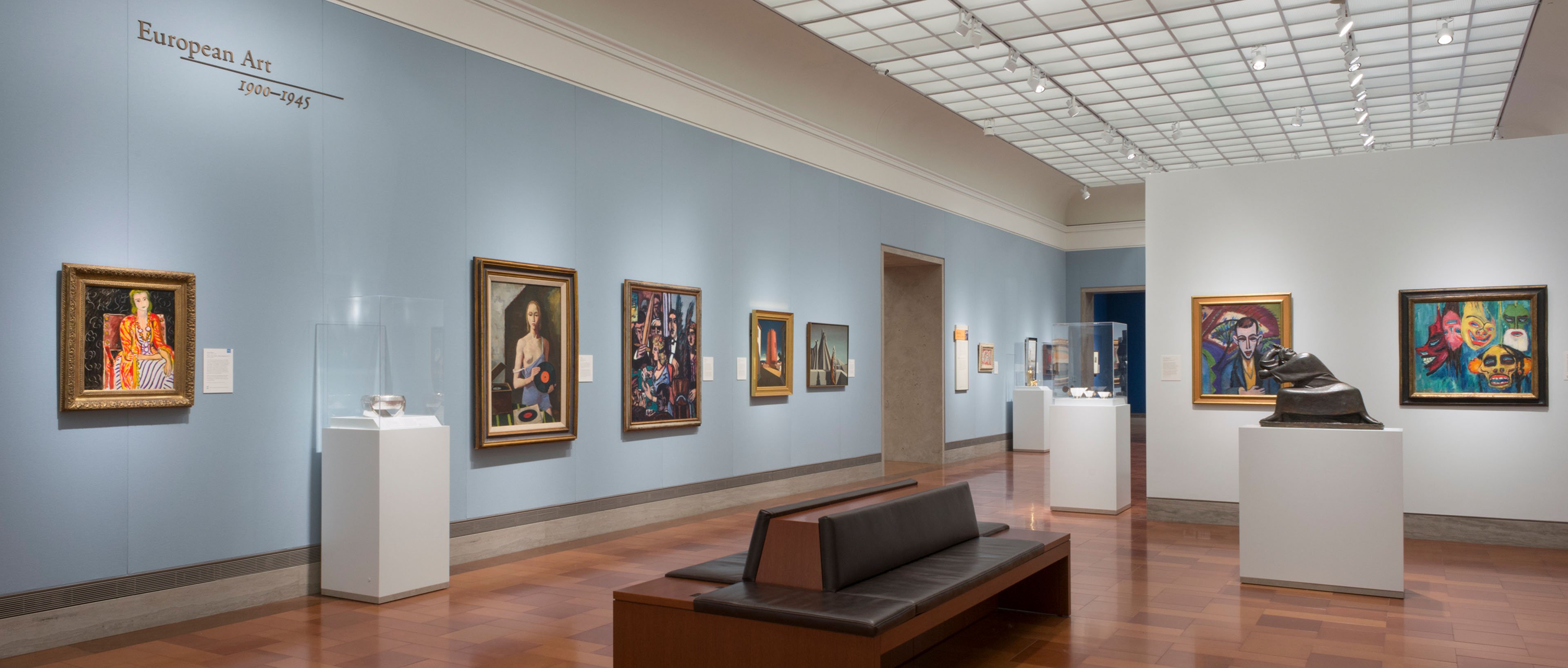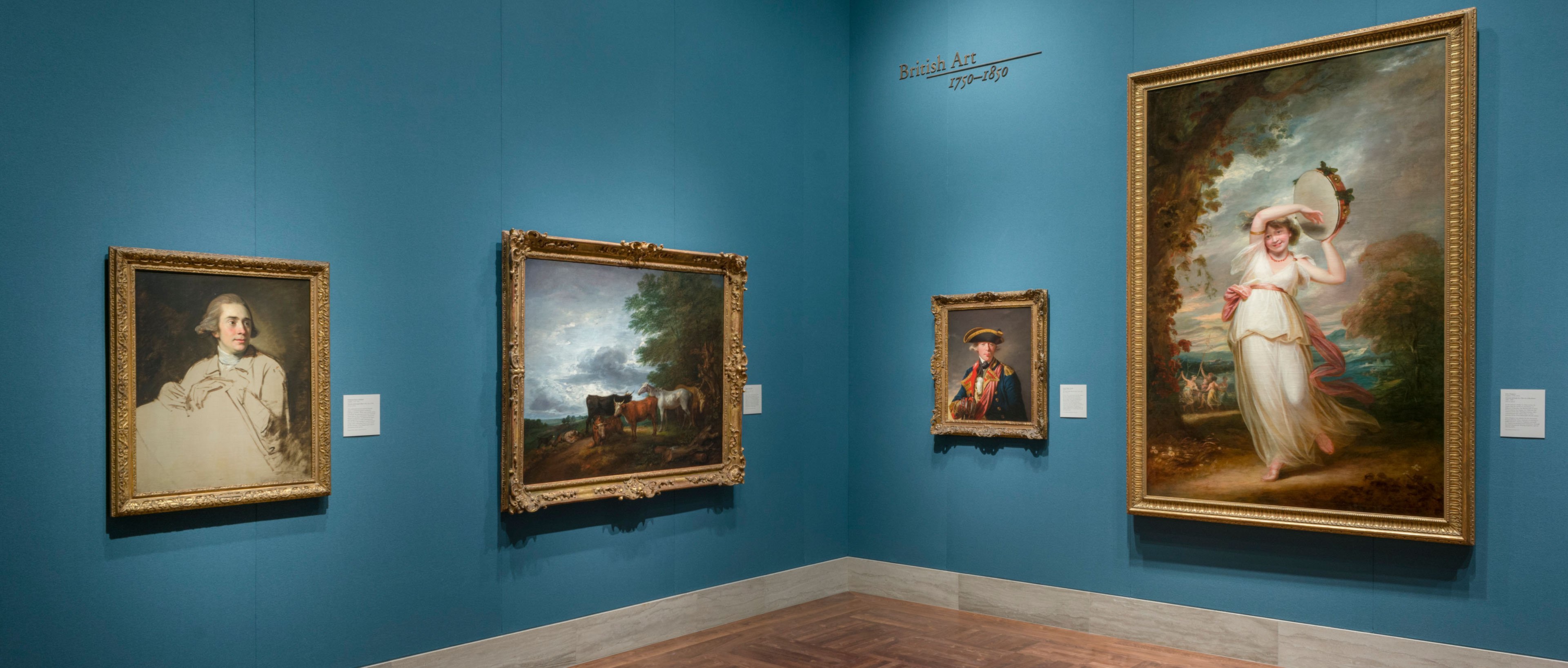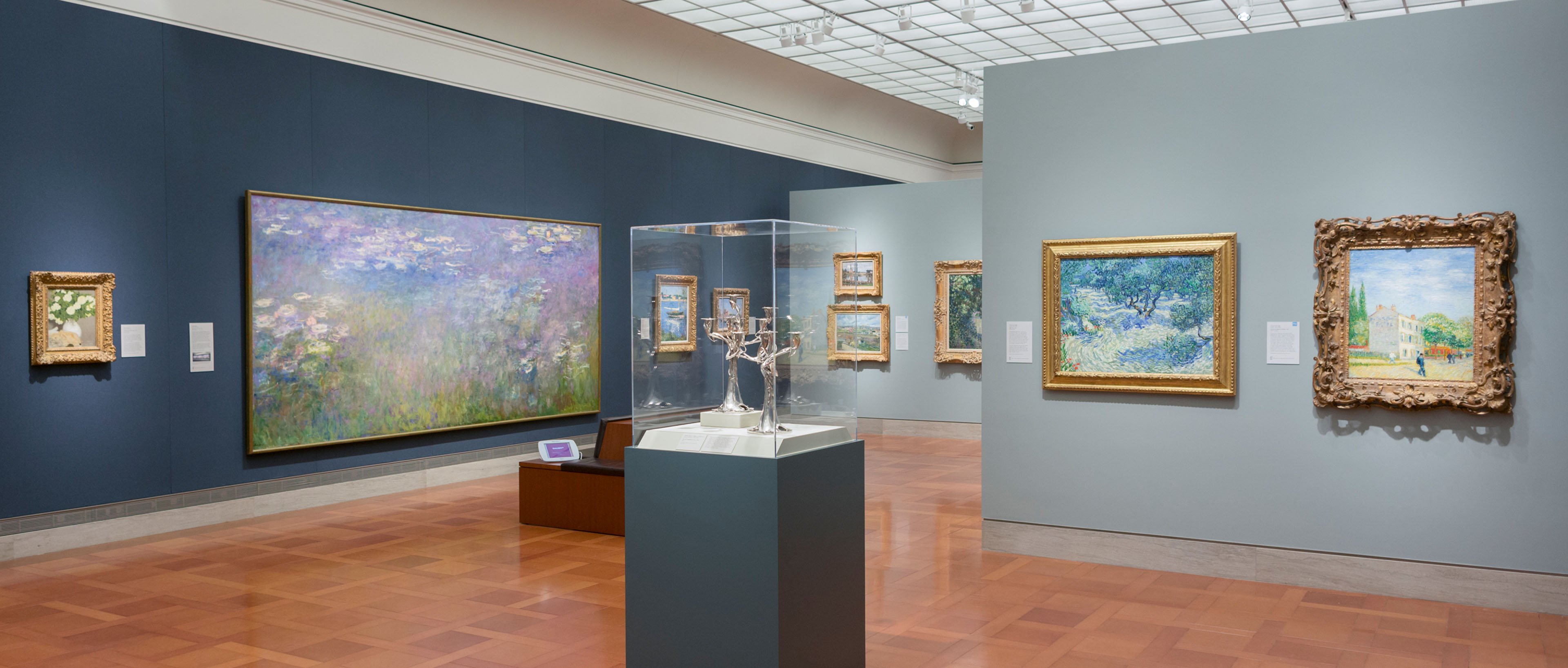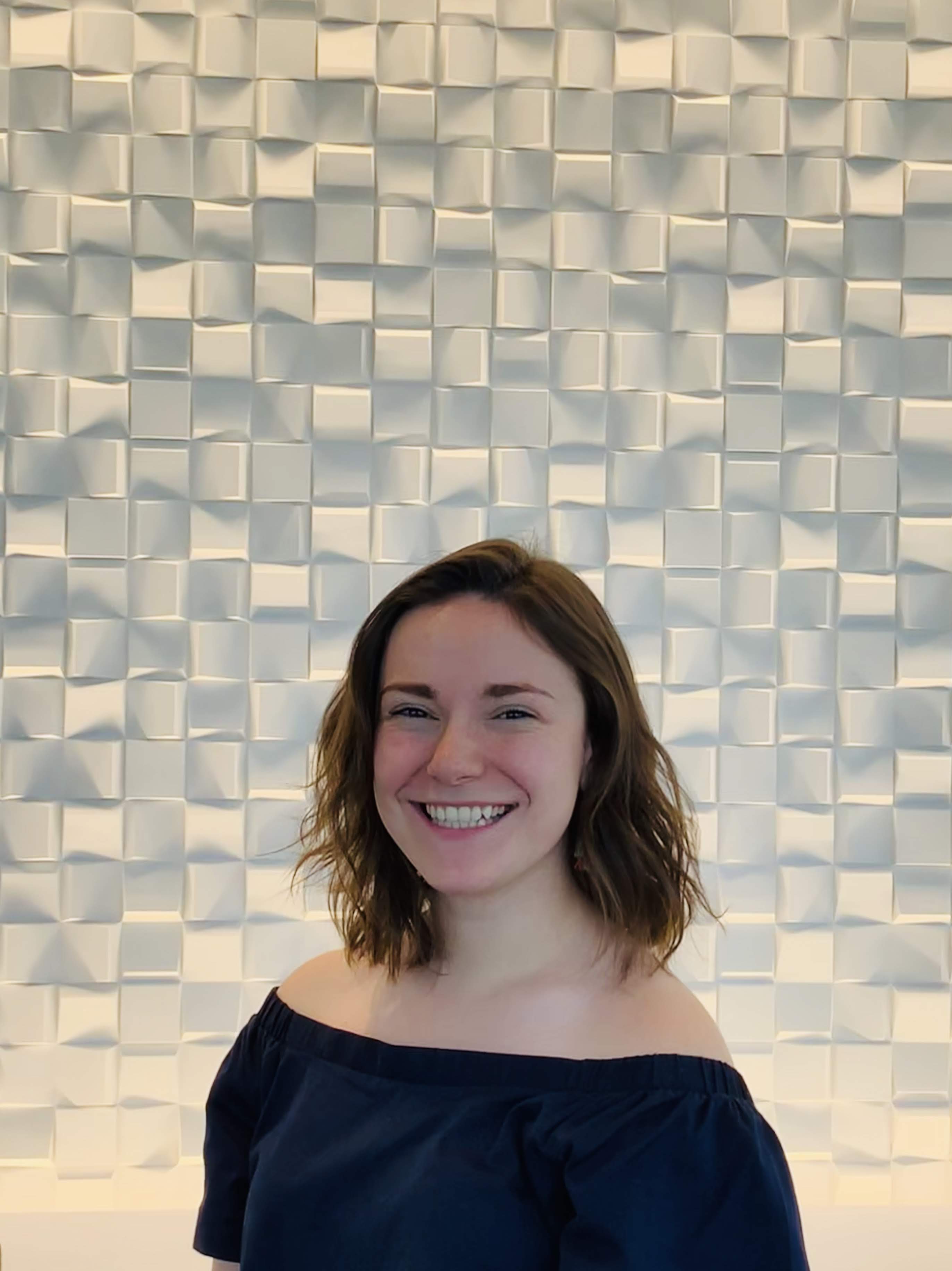With museum patrons developing a taste for not simply viewing art but experiencing it, the job of a modern lighting designer goes far beyond simple displays. Visionary innovators such as Jake Ludemann, Lighting Designer and Project Manager at the Nelson-Atkins Museum of Art in Kansas City, Missouri, not only put masterpieces in their best light, but orchestrate immersive experiences that connect visitors to the art in new ways.
Jake recently spoke with Ketra about how he came to be a lighting designer, his recent work on the Bloch Galleries within the Nelson-Atkins Museum, and how Ketra’s technology helps him create magic for museum patrons.

The Bloch Galleries at The Nelson-Atkins Museum of Art, Kansas City, MO. Image courtesy: Nelson-Atkins Media Services/ Photo: Joshua Ferdinand
1. Did you always want to work in lighting design?
No, I haven’t always dreamed of being a lighting designer. I was lucky enough to get an internship at the museum in 2010. I was about one-third of the way through my time here, doing typical intern work, until one day I was cleaning light fixtures to get ready for an install, and started thinking, ‘I could totally do this – I could be very happy working with lighting professionally’. Honestly, I got very lucky in how I was able to make that jump into the lighting field — there are just a handful of positions like this in any city anywhere.
2. You’re a true Ketra lighting pioneer — what inspired you to try it in our early days, and why do you keep coming back to it?
I was able to start using the system early on, and my knowledge has grown along with Ketra! In fact, back in 2017 we got to use the N4 hub to control our gallery fixtures before it had even been officially released. My job is to create the highest quality environment for our collections to be displayed in and part of that role is thinking creatively to reimagine what our galleries could be. I’m always looking for the most innovative technology to do that. With Ketra, we’ve been able to create a laboratory where we can easily experiment with the technology to see how light can positively impact our exhibits and guest experiences. For example, there's a piece by Rousseau on display in the Bloch Galleries whose brown tones had deepened over time, muddying up some of the details. Using Ketra’s Vibrancy feature, we’ve actually been able to change the lighting in such a way that patrons can now see these details that had been lost to time.
We are able to showcase every single piece of artwork at its best, because each painting has its own precise Vibrancy, color temperature and brightness settings. . . Little jumps can make the blues and greens of a piece come out or the purples recede — viewing the artwork becomes such an animated experience.
3. How has Ketra lighting enabled you to innovate at the Museum?
Having Ketra is like getting the biggest box of crayons in the world to work with. We are able to showcase every single piece of artwork at its best, because each painting has its own precise Vibrancy, color temperature and brightness settings. We fine-tuned them in increments as small as one percent. As you play with the settings, the 3-dimensionality of a painting shifts. Little jumps can make the blues and greens of a piece come out or the purples recede — viewing the artwork becomes such an animated experience.
In addition to putting the art in its best light, Ketra’s capabilities allow us to craft some really amazing special events. For example, we hosted a poetry-reading night, where local poets came to share compositions inspired by particular works in the museum. I was able to program the lighting for poet Glenn North’s piece inspired by Sebastian Pether’s Eruption of Vesuvius, bumping up to blood-red lighting as the intensity of the poem’s performance increased. Another poem was written in response to three post-Impressionist works depicting portraits of women. The author, José Faus, used these 3 works to discuss the changes in a relationship over the course of time. As he read his poem, I held two keypads and adjusted the lighting’s color temperature to mirror the temperature of a relationship as it changes. Not only was the light moving to follow him, but it was shifting from warm white to reflect warmer times in the relationship, then to cooler light as the relationship cooled.
The easy adjustability and flexibility of Ketra also lets the museum host events for special populations, such as low-sensory mornings for those with autism. For one of these sessions, I was asked to program a 15-minute sunrise to sunset loop for Monet's Water Lilies. I decided to use a condensed version of Ketra’s Natural Light setting to simulate the passage of time, so that visitors could see how the piece changed over the “day”. With the rest of the gallery lighting dimmed so that the Monet piece was the only one truly illuminated, it was easy to imagine standing in Claude Monet’s peaceful flower garden in Giverny, watching him paint.

The Bloch Galleries at The Nelson-Atkins Museum of Art, Kansas City, MO. Image courtesy: Nelson-Atkins Media Services/ Photo: Joshua Ferdinand
4. What do you see as trends or upcoming opportunities in the area of museum lighting?
Well, Internet of Things (IoT) platforms are huge right now. Everyone seems to have their brand of controllable sources and fixtures. But what sets Ketra apart in that space is the design software. When it comes down to controlling the fixtures, most options feel consumer grade, not professional grade. App control of 3-5 fixtures is OK, but for a gallery we need a robust backbone that can accommodate hundreds of fixtures.
Another trend that I’m seeing revolves around lighting and color-related conservation work. Earlier I mentioned improving the rendering of one of our Rousseau pieces using gallery lighting. Another example of this is the Rothko murals that were once installed in a penthouse dining room at Harvard University. The works were exposed to so much light that the deep colors had faded significantly, so much so that the paintings were removed and stored out of sight. However, in 2014, projectors using colored light were used to simulate the way the pieces looked when they were originally painted, basically “restoring” the work without actually touching it. As lights become more controllable, this technique may become more common in conservation work.
A third trend that I expect to emerge is the importance of LED consistency over lifespan. We’re starting to see LED systems age and as they begin approaching their end of life, I think we are going to start seeing more concern about color consistency. Ketra, however, is very well-positioned to deal with this, because of its Color Lock preservation technology. As someone who relies on these lights professionally, I’m excited to see how Color Lock will work in our galleries over time. It’s also soothing knowing it’s there even though I can’t see it working — I’m just glad to know that Ketra is thinking about things like that and working on them.
I think we are going to start seeing more concern about color consistency. Ketra, however, is very well-positioned to deal with this, because of its Color Lock preservation technology. As someone who relies on these lights professionally, I’m excited to see how Color Lock will work in our galleries over time.
5. What’s next for the Bloch Galleries and the Nelson-Atkins Museum of Art?
Right now, we’re closed to the public because of the current health crisis. But we are about to start an initiative that uses the Ketra system to provide new interactive programming when we reopen. I can’t give away all the secrets, but I can tell you that we will be creating new and different meaningful experiences when visitors are able to return to the gallery. I know everyone will be really excited to see what our team comes up with.

The Bloch Galleries at The Nelson-Atkins Museum of Art, Kansas City, MO. Image courtesy: Nelson-Atkins Media Services/ Photo: Joshua Ferdinand
Read more about the Ketra installation in the Bloch Galleries at our case study. For more about the Nelson-Atkins Museum and the Bloch Galleries, visit them online. And if you enjoyed this post, check out our previous interviews with architect Erin Nies of Studio Llou, plus integrators Ed Gilmore of Gilmore’s Sound Advice, and Shannon Bush of ServiceTech. You may also enjoy our dialogue with designer Erin Dreyfous of Tillotson Design Associates.

24/7 Technical Support:
1-844-LUTRON1 (588-7661)
lightingsupport@lutron.com
Customer Service:
Monday-Friday 8am- 5pm EST
1-844-LUTRON1 (588-7661)
The Ketra logo, Ketra, TruBeam, Color Lock, and Calibration360 are trademarks or registered trademarks of Lutron Electronics Co., Inc. in the US and/or other countries.
©2025 Lutron Electronics Co., Inc. All rights reserved.
Get inspired with all the best from Lutron and Ketra: exclusive news, project features, and more.